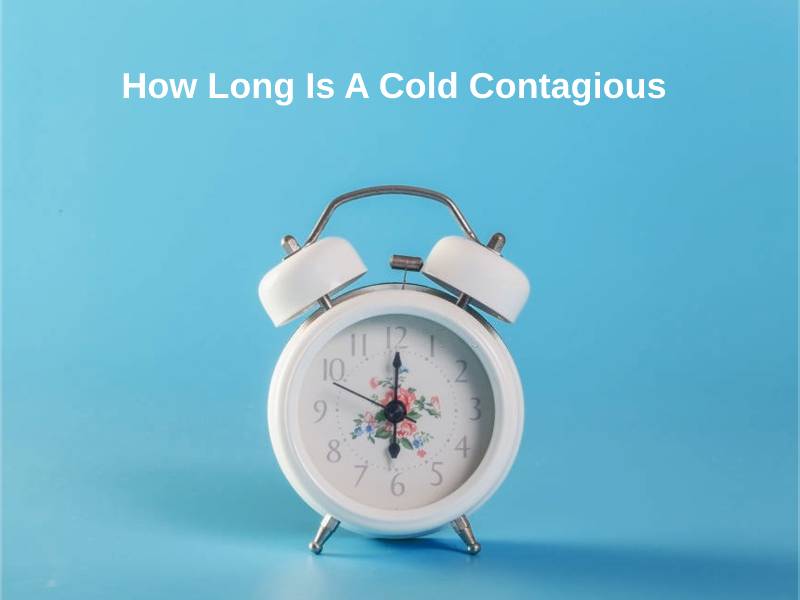Exact Answer: 7 – 10 days
HFMD is a disease that leads to the appearance of ulcers in and around the infected’s mouth and leads to rashes in the area around the legs, feet, buttocks, or hands. Children below the age of 5 years are most likely to be afflicted by HFMD, even though anyone is susceptible to it. While it is not a serious cause of concern if someone is infected, it is imperative to get it diagnosed in time so you can help alleviate the patient’s pain. While there is no vaccine or cure for HFMD, it goes away on its own in 7-10 days.

How Long Is A Person Contagious With HFMD?
If you witness the following symptoms in your child, it is very likely they have contracted HFMD:
- Fever
- Loss of appetite
- Sore throat
- Painful mouth sores (which develop into blisters)
- Pain while swallowing
- Skin rashes/blisters on hands, legs, feet, buttocks, etc
When these symptoms are mild, you have no cause for worry and can wait out the 7-10 days period at home. However, if the symptoms are severe, do not recede after 10 days or if your child is less than 6 months old, you must consult a physician. Very rarely, complications may arise from your child having HFMD. Dehydration is possible if the child is not drinking enough water due to pain while swallowing. Viral meningitis, encephalitis, and/ or paralysis can also occur.
However, these complications are extremely rare, and a majority of the children recover from HFMD within the stated time period. Pregnant women are advised to meet with their doctors if they have been exposed to someone infected with the disease. While the probability of any complication arising is very low, it is best to err on the side of caution.
HFMD is mild but contagious. It can spread very quickly in a school/daycare environment. The virus may be contagious from 1-3 weeks since inception and is at its worst in its first week.
The above information can be summarized in the following table:
| Contagion time (days) | |
| Without complications, mild HFMD | 7 – 10 |
| With complications, severe HFMD | 10 – 21 |
Why Is A Person Contagious With HFMD That Long?
HFMD is primarily spread through 3 ways:
- Person to person contact – hugging, sharing utensils, etc
- Secretions from nose and throat of an infected person, transmitted by air or touch – touching mucus, etc
- Contact with contaminated objects or places – touching toys, crib, etc and things that might have the virus on them, and then transferring it via touch to your eyes, nose, or mouth
- Touching the infected person’s feces – while changing diapers, and then touching your eyes/ nose/ mouth
Even if a person does not display any symptoms, or has just recovered from HFMD, they can still be a carrier of this infection. HFMD spreads faster than usual in the months of summer and fall. While a child is displaying symptoms of HFMD, they should stay at home. Daycares and schools can easily become superspreaders if the infected child attends classes while sick.
The most important way you can stop HFMD from spreading is by regularly sanitizing your hands with soap and water for a minimum of 20 seconds. This should be done before and after meals, after coughing or sneezing, and after changing diapers, etc of an infected child. Avoid touching your hands, eyes, and mouth with unwashed hands. This step is especially important if you are taking primary care of the infected child.
You should regularly disinfect touched objects like doorknobs, toys, etc to prevent transmission. Even though it may be hard, avoid close contact like hugging, kissing, etc the infected person.
Conclusion
Many people confuse this disease with the Foot and Mouth disease of animals. The latter is a viral infection that can be contracted only by cows, sheep, and pigs. HFMD is only contagious among humans. If your child is infected, you must inform the child’s school/ daycare, so that proper measures may be taken to counteract the spread of the disease. Always consult your doctor before going back to work/ school.
HFMD is not a disease that requires great precaution except what anyone might already practice if they maintain good hygiene.





















The article’s emphasis on hygiene practices and preventive measures is instructive and beneficial.
Indeed, the precautions are vital for handling this disease.
I’m grateful for the insights provided in this article, it’s very educative.
Absolutely, it’s great to have such comprehensive information available.
This article makes one realize the importance of good hygiene practices in preventing HFMD.
The duration of contagion was an eye-opener. It’s a reminder to be extra cautious with hygiene.
Very true, especially given the high contagion risk in school/daycare environments.
I agree, the article’s emphasis on hygiene as a preventive measure is indeed important.
This article provided a clear and well-organized overview of HFMD that can help prevent the spread of the disease.
Indeed, it’s very informative and helpful.
The article does a good job of balancing caution and reassurance, providing useful information about HFMD.
Yes, it’s very informative and can help in managing the risks of HFMD.
I’m impressed by the detailed information shared! The precautions are very helpful as well.
I found the tips about disinfecting and preventing transmission particularly informative.
Yes, these are useful tips to remember in preventing HFMD.
Informative and well-constructed article shedding light on HFMD, its symptoms, and preventive measures.
Absolutely, the specifics about preventive actions are quite enlightening.
HFMD can be worrisome; the article provides a comprehensive understanding and necessary precautions.
That’s right, proactive measures are essential in dealing with the disease.
I understand the need to be cautious but it’s also reassuring to know HFMD is not a serious cause for concern.
Absolutely, the article does a great job of balancing caution with reassurance.
That’s a very informative and useful article, and relevant for parents and guardians.
Absolutely, the tips can help in safeguarding kids and minimizing HFMD risks.